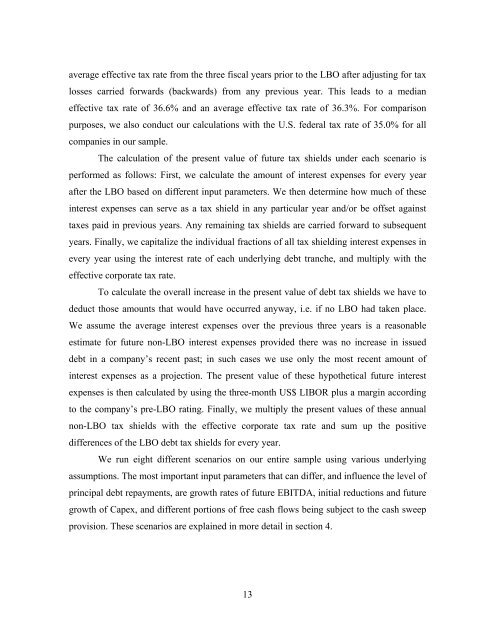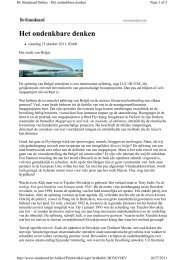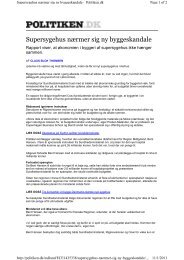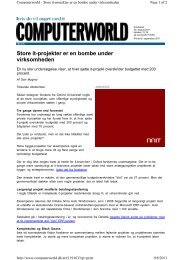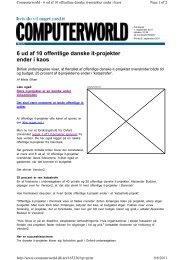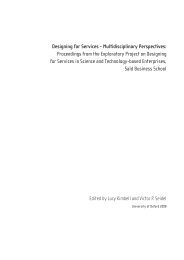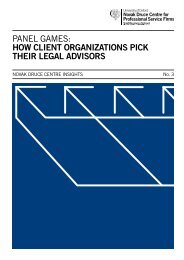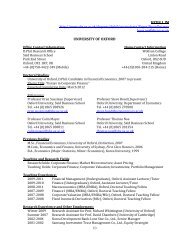Who benefits from the leverage in LBOs? - Said Business School ...
Who benefits from the leverage in LBOs? - Said Business School ...
Who benefits from the leverage in LBOs? - Said Business School ...
You also want an ePaper? Increase the reach of your titles
YUMPU automatically turns print PDFs into web optimized ePapers that Google loves.
average effective tax rate <strong>from</strong> <strong>the</strong> three fiscal years prior to <strong>the</strong> LBO after adjust<strong>in</strong>g for tax<br />
losses carried forwards (backwards) <strong>from</strong> any previous year. This leads to a median<br />
effective tax rate of 36.6% and an average effective tax rate of 36.3%. For comparison<br />
purposes, we also conduct our calculations with <strong>the</strong> U.S. federal tax rate of 35.0% for all<br />
companies <strong>in</strong> our sample.<br />
The calculation of <strong>the</strong> present value of future tax shields under each scenario is<br />
performed as follows: First, we calculate <strong>the</strong> amount of <strong>in</strong>terest expenses for every year<br />
after <strong>the</strong> LBO based on different <strong>in</strong>put parameters. We <strong>the</strong>n determ<strong>in</strong>e how much of <strong>the</strong>se<br />
<strong>in</strong>terest expenses can serve as a tax shield <strong>in</strong> any particular year and/or be offset aga<strong>in</strong>st<br />
taxes paid <strong>in</strong> previous years. Any rema<strong>in</strong><strong>in</strong>g tax shields are carried forward to subsequent<br />
years. F<strong>in</strong>ally, we capitalize <strong>the</strong> <strong>in</strong>dividual fractions of all tax shield<strong>in</strong>g <strong>in</strong>terest expenses <strong>in</strong><br />
every year us<strong>in</strong>g <strong>the</strong> <strong>in</strong>terest rate of each underly<strong>in</strong>g debt tranche, and multiply with <strong>the</strong><br />
effective corporate tax rate.<br />
To calculate <strong>the</strong> overall <strong>in</strong>crease <strong>in</strong> <strong>the</strong> present value of debt tax shields we have to<br />
deduct those amounts that would have occurred anyway, i.e. if no LBO had taken place.<br />
We assume <strong>the</strong> average <strong>in</strong>terest expenses over <strong>the</strong> previous three years is a reasonable<br />
estimate for future non-LBO <strong>in</strong>terest expenses provided <strong>the</strong>re was no <strong>in</strong>crease <strong>in</strong> issued<br />
debt <strong>in</strong> a company’s recent past; <strong>in</strong> such cases we use only <strong>the</strong> most recent amount of<br />
<strong>in</strong>terest expenses as a projection. The present value of <strong>the</strong>se hypo<strong>the</strong>tical future <strong>in</strong>terest<br />
expenses is <strong>the</strong>n calculated by us<strong>in</strong>g <strong>the</strong> three-month US$ LIBOR plus a marg<strong>in</strong> accord<strong>in</strong>g<br />
to <strong>the</strong> company’s pre-LBO rat<strong>in</strong>g. F<strong>in</strong>ally, we multiply <strong>the</strong> present values of <strong>the</strong>se annual<br />
non-LBO tax shields with <strong>the</strong> effective corporate tax rate and sum up <strong>the</strong> positive<br />
differences of <strong>the</strong> LBO debt tax shields for every year.<br />
We run eight different scenarios on our entire sample us<strong>in</strong>g various underly<strong>in</strong>g<br />
assumptions. The most important <strong>in</strong>put parameters that can differ, and <strong>in</strong>fluence <strong>the</strong> level of<br />
pr<strong>in</strong>cipal debt repayments, are growth rates of future EBITDA, <strong>in</strong>itial reductions and future<br />
growth of Capex, and different portions of free cash flows be<strong>in</strong>g subject to <strong>the</strong> cash sweep<br />
provision. These scenarios are expla<strong>in</strong>ed <strong>in</strong> more detail <strong>in</strong> section 4.<br />
13


